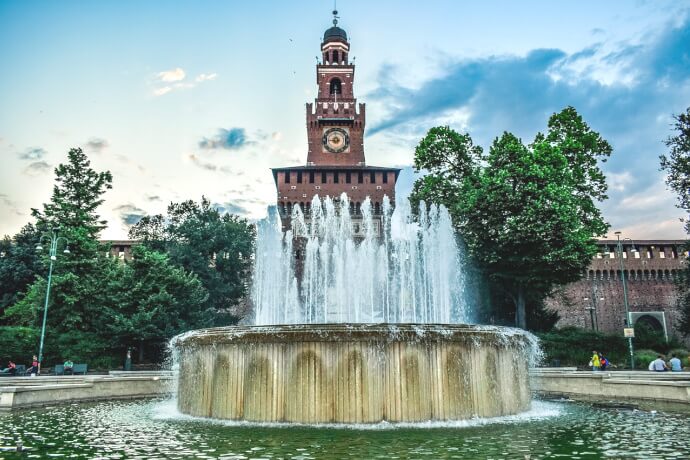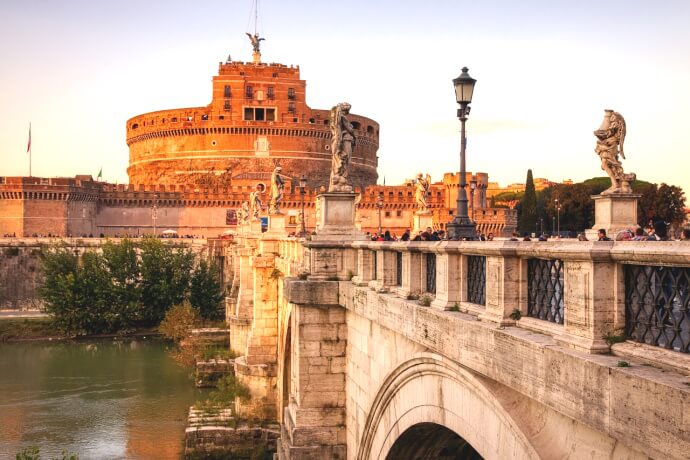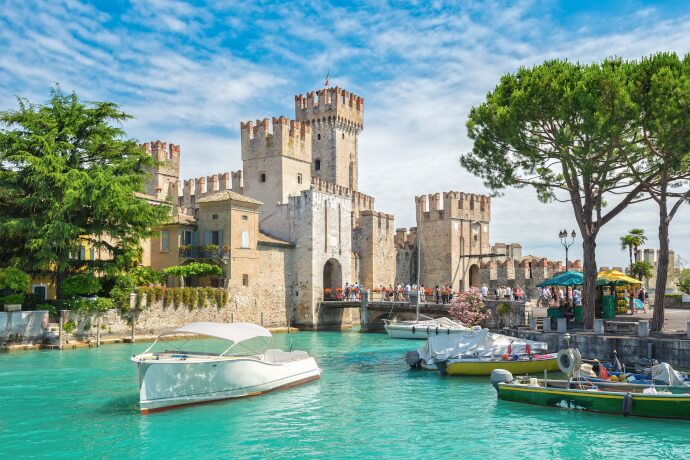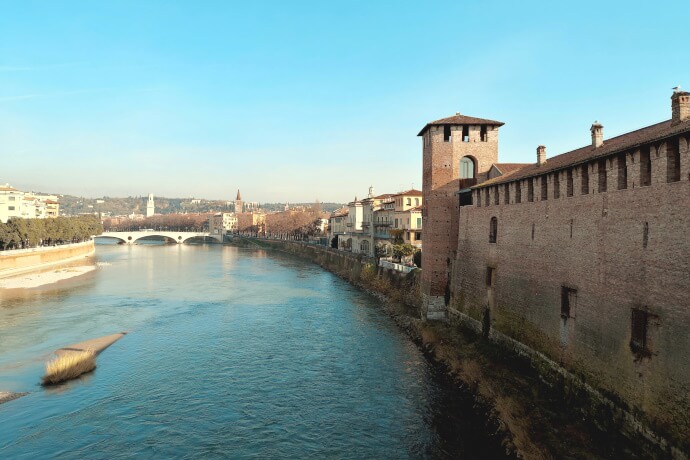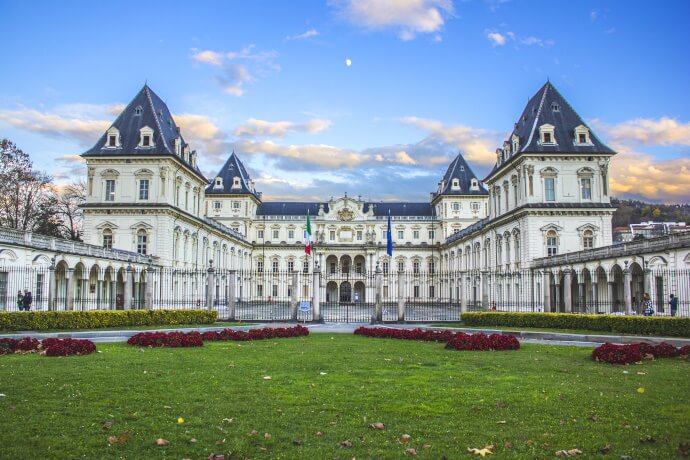History is as inalienable from Italian culture as it is pasta and the country’s delicious gastronomy. A part of Italy’s past after the Roman Empire centres around stoic and inspirational fortified constructions which played a pivotal role in the defence of the former states and duchies (ruled by noble and influential families) fragmenting the territory until the 19th century.
Today, across Europe’s boot, travellers find an engrossing collection of around 20,000 castles that play into a fairytale-like magical conception of the country’s complex past and path to unification. Each one of them constitutes a unique opportunity to revisit and experience the past.
From the cosmopolitan flair of Milan to the enchanting San Marino, we have gathered a selection of the ten most beautiful castles that you must visit on your trip to Italy!
Sforza Castle, Milan
Nestled in Parco Sempione, right at the heart of Milan, Sforza Castle pays testament to the history of the city under the rule of the Duke of Milan, Francesco Sforza. Standing on the remnants of a former 1300s defensive fortification, this construction strikes as a straight-out architectural marvel.
Sforza was exponentially crucial to Italian politics during Francesco’s reign as the city’s Duke. The imponent fortified foundations helped impose himself as a Renaissance prince with a sophisticated dominion and power. Over the years and centuries, Sforza witnessed opulence, devastation and subsequent reconstruction, which have blessed it with its iconic red-brick towers – a visual anchor for those seeking to immerse themselves in the city’s history, art and architecture.
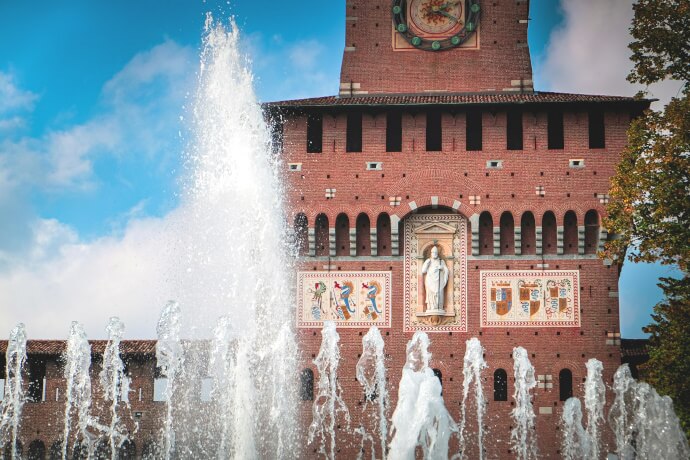
Milan’s resilience and cultural richness are now represented in Sforza’s Museum complex, with an impressive art collection encompassing defining works by Michelangelo and Leonardo da Vinci. In a sense, this once-defensive construction has become an important cultural hub.
Beyond the museum, one of the top attractions at Milan’s castle is to walk along the 7-metre walls to admire all the intricate details of the monument’s elements, including a central tower, Torre del Flarete, designed and decorated by the architect and sculptor of the same name.
Castel Sant’Angelo, Rome
Once the tomb of Roman Emperor Hadrian who commanded the construction of a mausoleum for himself and his family, was turned, in the Middle Ages, into a fortress. Castel Sant’Angelo was, then, used by the popes for defensive and residential purposes. Hence, it is connected to Vatican City through a fortified corridor, Passetto di Borgo.
Towering above the Tiber River, Sant’Angelo stands out for its cylindrical shape and commanding presence, which confer Rome an even more captivating skyline. The blend of Roman and Renaissance elements, creates a distinctive outlook, harmonious and proportional, with ornate sculptures connecting it to the country’s architectural identity.
From the ancient Roman period to the present, the castle has been used as a refuge but also a prison. In literature, it has also been used as a backdrop, for example, in Puccini’s opera “Tosca”. At the moment, it is a dazzling museum, which makes it a must-see highlight. Here, you can explore the papal rooms and marvel at the capital’s timeless beauty from the Angel Terrace.
Scaligero Castle, Lago di Garda
Enshrouded in the mythical legend of the vengeful ghost of Ebengardo, Scaligero Castle transports you to an enchanting site of fortified walls planted by a small harbour with sheltered boats. The drawbridges and imposing stone walls connect it to the medieval period.
Strategically situated at the top of the Sirmione Peninsula, the castle’s original role was to defend the territory of Lake Garda, ruled by the powerful Della Scala family of Verona. They ordered the structure to feature tall, sturdy walls and drawbridges, which helped in military defensive manoeuvres. This way, the castle guarded the access point to the desired peninsula for centuries. The ruling family also used this construction to exercise their influence in northern Italy.
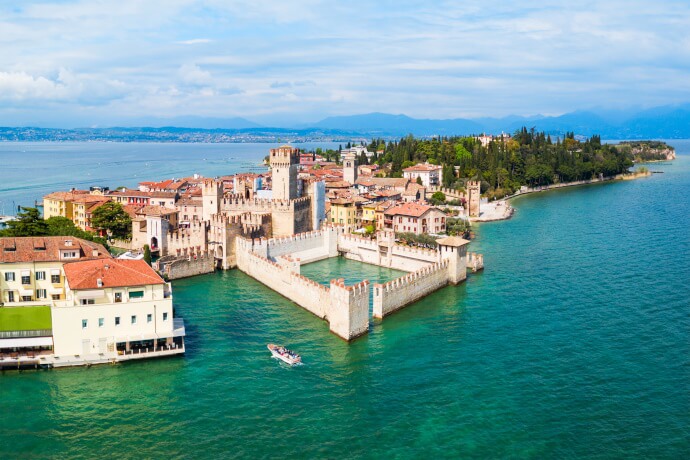
After conceding it to Venice in 1406, the castle continued to exercise its functions as a fortification until the unification of Italy in 1861. After that, it served for a while as the office of the local government of Sirmione, later transformed into a well-preserved architectural gem, drawing tourists and history enthusiasts alike.
Today, Scaligero’s medieval charm is more alive than ever, and you can see it in its crenellated towers and towering walls that provide visitors with a tangible glimpse into the past, only heightened by the breathtaking views over the region’s picturesque surroundings.
Aragonese Castle, Ischia
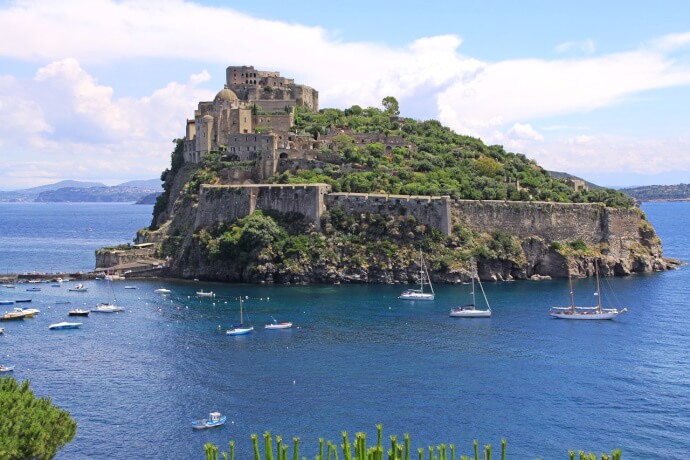
Ischia’s most famous landmark is none other than the remarkable Aragonese Castle – a multifaceted jewel reborn and transformed over the centuries. Just off the coast of Naples and perched atop a rocky islet, this monument occupies a prominent role in the destination’s historical tapestry.
Picture labyrinthine alleyways, ancient chapels and panoramic views over the Mediterranean Sea and you are standing in the majestic Aragonese Castle. Constructed in 474 BC, this fortress has helped protect against several invasions, dangerous to the Kingdom of Naples’ security. Throughout history, the castle was also repurposed into a Benedictine monastery and even a prison in the 1800s.
Standing proudly as a testament to the region’s past, the monument is now open to the public, allowing each person to unearth its most secret tales at their own pace. The owners, the Mattera family, take pride in helping history persevere through time by playing a role in the visitors’ lives.
Rocca Maggiore, Assisi
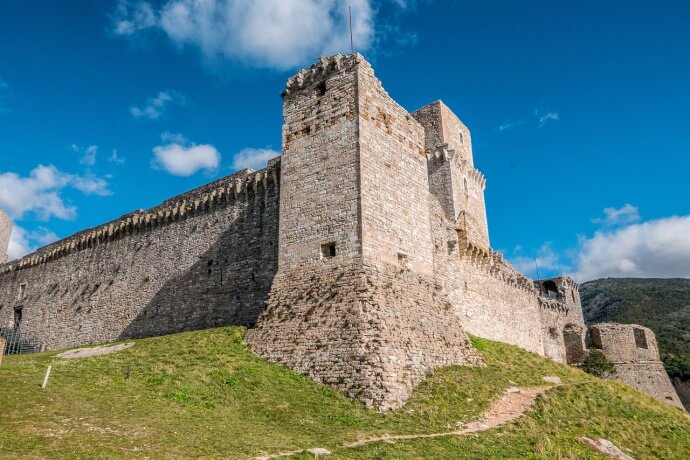
Strategically positioned in the heart of the town of Assisi, this fortress with origins dating back to the Roman era served as an important stronghold during the medieval clashes involving the Papal States. The robust walls and towers echo its historical significance in the countless battles and sieges that took place at this time.
It is with no surprise that Rocca Maggiore emerges as a symbol of resilience, which has shaped the city’s destiny and role in Italy’s cultural narrative. Sitting on top of a hill, the fort has transitioned into an important jewel of history and culture, where the remaining ruins help relive the past. The Umbrian countryside helps one connect to a more stoic side of Italy, idyllic and storied.
As you traverse the ancient pathways of this time-honoured monument, you are in for a journey closer to the nation’s collective memory. Be prepared to have layers and layers of the history of this military bastion unravel before your eyes!
Guaita, San Marino
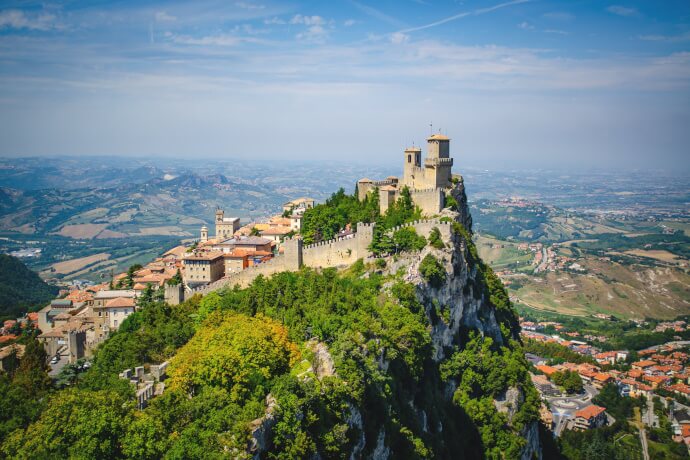
San Marino’s commitment to preserving its historical and cultural legacy is well preserved in the 11th-century Guaita bastion. From the top of Mount Titano, this fortified construction has helped the small republic fight against external forces threatening the region’s independence. The commanding view from the top helped surveil the surrounding areas while preparing, if necessary, for defence.
In the 15th and 16th centuries, different modification works were aimed at making the fortress even stronger against the period’s consecutive sieges. In that way, it was added to the original structure a sloping roof, called Rocca Guaita, and thick double walls. A more modern touch is found in the remnants of World War II artillery.
Nowadays, this historical relic is an unwavering tourist attraction. People from all corners of the world travel here to step back in time and have a glimpse into San Marino’s resilience. The well-preserved architecture is an added bonus to the transporting experience that is to visit this monument built in the distant 1000s.
Castello Estense, Ferrara
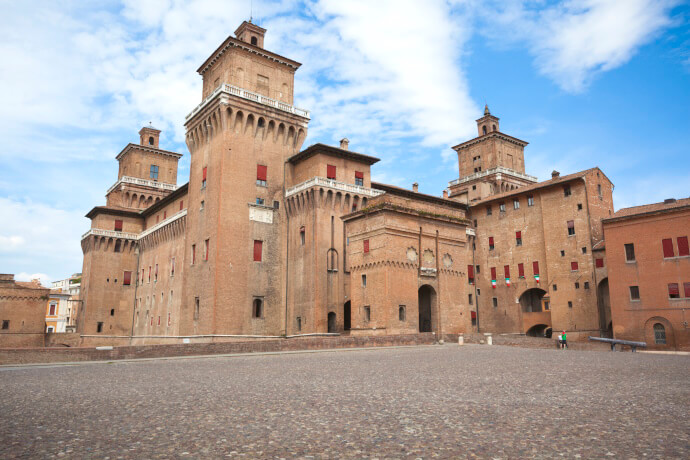
Concealed in Ferrara’s medieval centre, Castello Estense powers through with its red-brick façade and intriguing aesthetic dominated by four massive towers and a moat. Dating back to the 14th century, the castle has served as a residence for the Este family (the rulers of Ferrara).
In Renaissance Italy, Estense was a place of glamour and a symbol of power. During this period, it welcomed the presence of illustrious figures such as Lucrezia Borgia (Italian noblewoman of the House of Borgia). The iconic “Hall of Games” adorned with frescoes is one of the main highlights of the era that can be visited today in the castle-turned-museum space.
The castle’s obscure past is hidden in the dungeons, where the current museum exhibits torture devices to provide a more inclusive understanding of the monument’s past under the ruling hands of the influential Estes.
Castel dell'Ovo, Naples
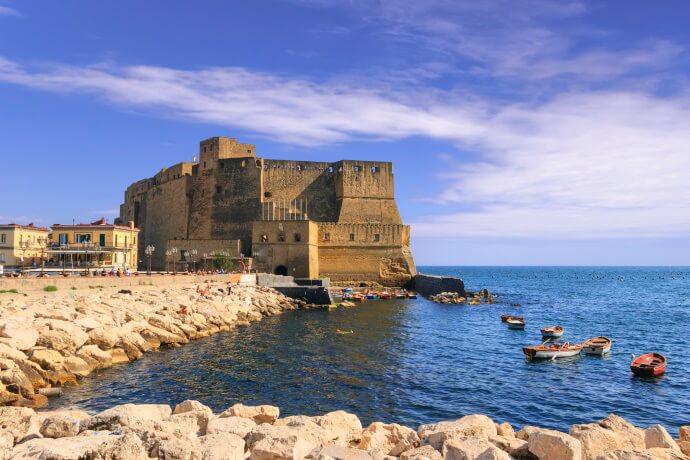
Set against a backdrop of azure waters and the vibrant city of Naples, Castel dell'Ovo, translating to Egg Castle, commands attention to this destination’s quaint landscape. This castle, located on the former island of Megaride, has origins in the ancient Roman period.
Imbued in this civilisation’s mythology, Castel dell'Ovo was thought to be the site where the siren Parthenope resided (one of the mermaids who tried to bewitch Ulysses with her singing). Despite this past, the structure we see today is tied to 12th-century Normans who occupied this area. Over the course of the following centuries, Naples’ iconic landmark was used as a royal residence, a prison, and even the seat of the State Treasury.
From the medieval ramparts, visitors can now marvel at the city’s outwardly panorama, the Vesuvius volcano, and the striking blue Tyrrhenian Sea. At the same time, one is welcome to peruse the site and directly interact with its history, while stumbling upon pivotal archaeological finds and artefacts.
Therefore, Castel dell'Ovo is thriving through the 21st century as a tourist magnet and an important monument in Naples’ cultural fabric.
Castelvecchio, Verona
In the land of Shakespeare’s tragic love story, ‘Romeo and Juliet’, stands another romantic site, Castelvecchio. Built on the banks of the Adige River, the medieval fortress from around the 14th century captures the attention with its crenellated towers and sturdy brick walls which reflect Verona’s as a hub of political intrigue and territorial dispute.
Such instability regarding the safety of the land required the construction of a fortified castle capable of protecting Verona and its surrounding areas. Lord Cangrande II della Scala used it to show off his influence and power against Venice, Gongaza and the Sforza families. Battles and sieges are, in that way, intricately connected to the monument’s history.
Castelvecchio’s architecture is part of its modern allure. As a prominent example of Gothic architecture, it dazzles visitors with M-shaped merlons, bridge walls and towers (seven in total). Inside, a museum preserves the memory of Verona’s important role in Italy’s and Veneto’s historical and cultural heritage. Artistic creations by Titian and Jacopo Bellini make this castle a living canvas!
Castello del Valentino, Turin
The regal abode for the House of Savoy is a 17th-century jewel of elegance and beauty which has metamorphosed through the ages. To this day, Castello Valentino stands proudly in the northern city of Turin as a grandiose marvel of architectural mastery.
Princess Christine of France, wife of Victor Amadeus I, is responsible for the structure we see today. A horseshoe shape with four rectangular towers harbours an expansive inner court beautified by a striking marble floor. Once inside, one can denote French influences in the transalpine ceilings.
During the Napoleonic wars of the 1800s, this luxurious space was turned into a military base. However, later in the century, architect Alfredo D’Andrade reformed the castle’s former glory, by blending its architecture with elements of the medieval and Renaissance styles. By then, Castello di Valentino regained its reputation as a symbol of Turin’s architectural prowess.
Now a UNESCO World Heritage Site, the monument and its lush green gardens landscaped by André Le Nôtre house the Faculty of Architecture of the Polytechnic University of Turin. Visitors are welcome to venture inside to explore its storied walls and green spaces.
Journeying through regal Italy
From the vibrant cosmopolitan aura of Milan to the picturesque allure of San Marino, our compilation of Italy’s most beautiful castles takes you on an exquisite journey across the country’s natural beauty and storied past. Each fortress and monument acts as a portal to a bygone era, inviting you to experience history from a completely new lens. The whispering tales of resilience and unity embodied by these magnificent structures will make your trip to Italy even more unforgettable. Let these castles guide your journey, with each location painting an even more vivid picture of the nation’s evolution!


